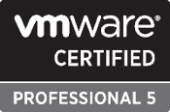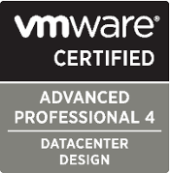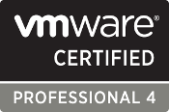
vCenter Operations Standard, Launced Today
I think “launched” is a good description of a product that represents a company’s first release from a product acquisition that was already somewhat mature. No surprising new features, no trend-setting advanced in interface or integration – just a solid, usable “pane of glass” to improve “visibility” into an existing product set. That’s how I’d describe VMware’s “new” vCenter Operations appliance for vSphere.
The product launches initially as a virtual appliance (similar to VMDR, vMA, vCMA, etc.) that enhances vCenter’s ability to track performance, capacity and changes in the vSphere environment. This initial offering is called VMware vCenter Operations Standard and is priced per-VM (I’ll get to those details later.) vCOPS Standard will be available for download and trial beginning March 14, 2011. Here’s how VMware describes it:
Proactively ensure service levels, optimum resource usage and configuration compliance in dynamic virtual and cloud environments with VMware vCenter Operations. Through automated operations management and patented analytics, you benefit from an integrated approach to performance, capacity and configuration management. You’ll gain the intelligence and visibility needed to
- Get actionable intelligence to automate manual operations processes
- Gain visibility across infrastructure and applications for rapid problem resolution
- Proactively ensure optimal resource utilization and virtual/cloud infrastructure performance
- Get ‘at-a-glance’ views of operational and regulatory compliance across physical and virtual infrastructure.
If you’re like me, that description won’t make you find a place in your strained IT budget for VMware’s new plug-in. Eventually, VMware will find the right messaging to sell this add-on, but let’s see if it can sell itself, shall we? Located deep within a “related whitepaper” there is an indication of how vCOPS differentiates itself from the crowd of “pretty statistics loggers” and delivers some real tasty goodness. I believe this is the real reason why VMware shelled-out $100M for the technology.
Dynamic Thresholds
Yeah, I thought that too. What the heck is a “dynamic threshold” and why do I care? For one thing, it takes VMware two pages of white paper just to describe what a “dynamic threshold” is, let alone describe how it adds value to vCenter. In short, VMware’s statistics logger applies eight proprietary algorithms to live and historical data to “predict” what “normal” operating parameters are for a specific VM, host, cluster, etc. and then make decisions as to whether or not anomalous conditions exist in the present operating state.

vCenter Operations' stats engine tries to see performance data as a seasoned admin would.
Effectively, VMware’s dynamic threshold takes a sophisticated look at the current trend data just like a seasoned IT admin would – except it does it across your entire virtual enterprise every 12 hours and predicts what the next 12 hours should look like. This “prediction” becomes the performance envelope, hour by hour, for the next 12 hours of operation. So long as your virtual object’s performance stays within the envelope, the likelihood of anomalous behaviour is low; however, when it is operating outside the envelope, outliers are likely to trigger performance alarms.
The following transforms are applied to statistical data every 12 hours:
• An algorithm that can detect linear behaviour patterns (e.g., disk utilization, etc.).
• An algorithm that can detect metrics that have only two states (e.g., availability measurements).
• An algorithm that can detect metrics that have a discrete set of values, not a “range” of values, (e.g., “Number of DB User Connections,” “Number of Active JMVs,” etc.).
• Two different algorithms that can detect cyclical behaviour patterns that are tied to calendar cycles (e.g., weekly, monthly, etc.)
• Two different algorithms that can detect general non-calendar patterns (e.g., multi-modal)
• An algorithm that works, not with time-series or frequently measured values, but with sparse data (e.g., daily, weekly, monthly batch data)
VMware claims this approach – to borrow a recently over-used term – “wins” versus typical bell-shape algorithm approaches many times over. In statistical analysis against real-world VM metrics, VMware says typical bell-shape analysis “barely shows up” and, in the few cases where it “wins” the bell-shape approach does so only slightly. In enterprise applications, being able to present “anomalous behaviour” of related systems in opposition can more quickly lead to root-cause identity. Here, VMware demonstrates how anomaly counts for separate, related application tiers can be compared and correlated visually:

Anomaly count comparison across separate tiers. Note "smart alert" gets triggered early in the process (Enterprise Edition).
Eric Sloof at NTPro.NL has posted a video (7 minutes) and screen shots that shows vCenter Operations Standard in operation. While Eric describes vCOPS as a “great new product,” Kendrick Coleman takes issue with VMware’s price model and questions its true value proposition (at least with the “Standard” edition.)
Do Fries Come with That?
From some of the back-peddling overheard in the vExpert pre-launch conference, VMware’s testing the waters on where the product fits at the low-end. Essentially, this is an enterprise class product offering that’s been paired-down to fit into a smaller IT budget. Like most VMware products, a generous “free” trial period will be granted to allow you to try before you buy. However, the introductory price (i.e. official pricing is not posted on VMware’s site) is set at $50/VM (hence Kendrick’s quandary) for up to 500 VMs (about $25K).
Since VMware intends to offer an inclusive pricing scheme, all registered VMs will need to be licensed into the Standard Edition’s footprint. In the vExpert call, there was “talk” about extending analysis only to specific VMs (and allowing for a paired-down licensing footprint) but that is conjecture today. In a typical enterprise where 70-80% of workloads are non-mission critical, the cost and license model for vCOPS could be an obstacle for some – or at least force the use of a separate vCenter and cluster arrangement. Let’s hope VMware comes-up with a mission-critical license model quickly.

























